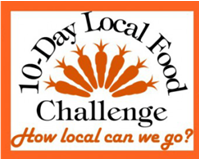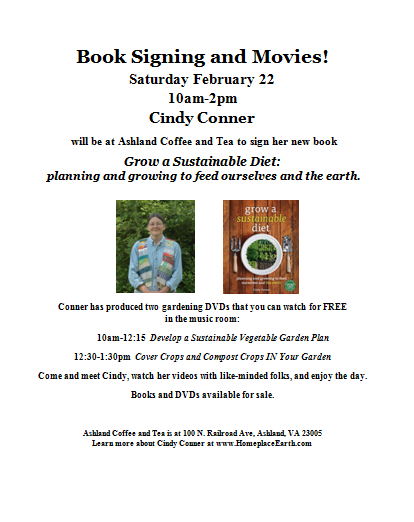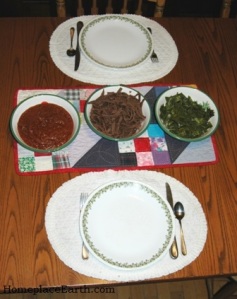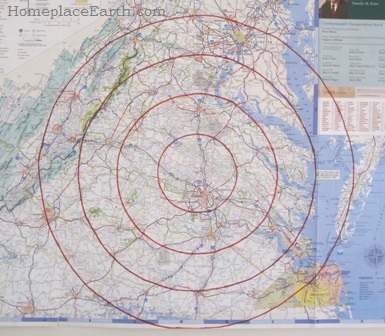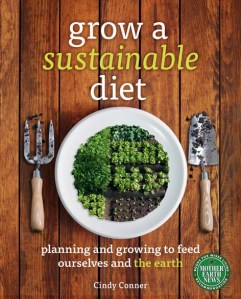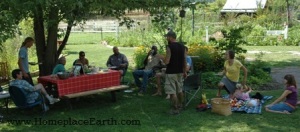
 In my last post I wrote about the 10-Day Local Food Challenge that I had decided to take on. Usually I write about growing food, but in reality, it begins with what we are eating. With each bite we take we have the opportunity to focus on a more local and sustainable diet, or not. Since my first garden in 1974 I have been putting homegrown food on our table. Not everything we eat is homegrown, but the amount has increased each year, along with my skills and experience in both growing and preparing it.
In my last post I wrote about the 10-Day Local Food Challenge that I had decided to take on. Usually I write about growing food, but in reality, it begins with what we are eating. With each bite we take we have the opportunity to focus on a more local and sustainable diet, or not. Since my first garden in 1974 I have been putting homegrown food on our table. Not everything we eat is homegrown, but the amount has increased each year, along with my skills and experience in both growing and preparing it.
The conversations about the challenge on Facebook bring to light the roadblocks some have experienced, such as the distance they have to travel to buy from a local farmer, even if it is within the 100 mile limit. The time it takes to plan and shop this way are obstacles that have been expressed. Also, even if eggs are found locally, what the chickens are eating may not have come from within 100 miles and very well might be GMO grains.
In 2000 I became concerned about GMOs in both my diet and the diet of my chickens, so I began to prepare my own chicken feed. At first I would buy corn from a local farmer and add oats from the feed store and organic wheat that I bought elsewhere. Once I stopped selling eggs I kept fewer chickens and no longer bought corn twelve bushels at a time from the farmer. That farm has since switched to GMO varieties. Now I buy organic grains–corn, wheat, and oats–from Countryside Organics, which is within 100 miles from here. I haven’t checked lately, but I’m sure not all the grain is grown within that limit. Nevertheless, I included eggs from my chickens in my local diet.
In Grow a Sustainable Diet, I wrote that with a sustainable diet we would be eating less meat prepared in different ways. So, it is fitting that when I checked our freezer when I decided to take the challenge at the spur-of-the-moment, I found a package of chicken backs and a package of ground sausage. Although we have raised all our own meat in the past, now it is only the meat from our few young roosters and old hens that grace the table from our farm. I depend on the growers at the farmers market if I want more. This whole year has been a year of BUSY and my meat supplies were low. I cooked the chicken backs in a crock pot. There was enough meat to have chicken and gravy over mashed potatoes for a couple meals for my husband and I and chicken broth enough for potato soup for another couple meals. I had already used most of the Irish potatoes that had come from my garden this year, so was very happy when our daughter showed up with ten pounds from her garden. I made sausage gravy over mashed potatoes for another couple meals. Vegetables from the garden completed those meals. Vegetable soup was on the menu that week, as well as cowpeas with salsa. Homegrown Mississippi Silver cowpeas are a staple in my pantry. The salsa was some that I had put up from garden ingredients this summer.
As much as I enjoy growing our own food, I am happy for the farmers market to add variety. I bought some beef there and had pot roast for Sunday dinner when our son and grandson joined us at the table during the challenge. My homegrown corn provided cornbread and breakfasts of cornmeal mush over the ten days. I didn’t have a lot of wheat I’d grown in my garden this year, but I had some. That went into Saturday morning pancakes and the gravy I made with chicken broth and sausage. When I visit family in Ohio I buy maple syrup produced nearby and bring it back to Virginia. I counted that as a local product, not an exotic.
The exotics during my ten days were milk, butter, vinegar (to put on the kale, as a salsa ingredient, and to sour the milk for the pancakes in place of yogurt), salt, onions, baking powder, black tea, and whatever was added to the pork to make the sausage and bacon. We didn’t eat bacon during the ten days, but I cooked with bacon grease. The pork is grown locally on pasture, but also receives some grain. The farmers there are working toward eventually growing their own grain. The animals are processed within the 100 mile limit. The beef we ate was grassfed. I could have lived without the tea, since I also make tea from homegrown herbs.
The milk we consumed during the challenge could have been local, but it wasn’t. For seven years when our children were growing up we kept a milk cow, so I have experienced that. I participated in a milk share one year. When the farmer moved and sold her cows to another milk share I decided not to continue as a customer because too many distractions were creeping into my life to pick up the milk at a certain time each week. So, I understand how that is, also. With milk you can make butter, yogurt, and cheese.
Onions were included as an exotic because I was out of the ones I’d grown—or rather thought I was out. I found some later that week that had been a late harvest and were not in their usual place. With such a wet spring, I didn’t harvest as many onions as I had hoped to this year. Onions and garlic are really important for a healthy diet. We have plenty of homegrown garlic. There are not enough storage onions available at the farmers market and the garlic growers often run out of garlic before fall. If you are a producer, grow more storage onions and garlic for your customers.
I made “zucchini” bread with homegrown sorghum for the flour and some late butternut squash that wouldn’t have time to mature in the garden before frost. We had locally grown popcorn cooked in butter for a snack. I also snacked on homegrown peanuts. Having the community to rely on, not just my own garden as I did for Homegrown Fridays, really expanded our diet. Except for the salt and the additions to make pork into sausage and bacon, my exotics were not so exotic and could have been produced locally or at home, if necessary.
This challenge was a good assessment of how far I have come on this journey—and it has been a journey. Eating this way didn’t happen all at once. Of course, my children are grown now and I work from home, which makes a difference. However, that doesn’t mean that I have more time than anyone else to make this happen. We all have the same amount of time, we just use it differently. If your ultimate goal is to have a local/homegrown diet, begin eating that way as much as is possible in the situation you find yourself in at the time. If you aren’t growing enough food yourself yet, and can’t find local options, choose food to prepare that you could grow if you had the time, place, and skills to do so. Certainly, there are limitations in the marketplace that have not yet been adequately addressed, but often the biggest limitation is ourselves. If we change ourselves, the rest of the world changes around us. 


